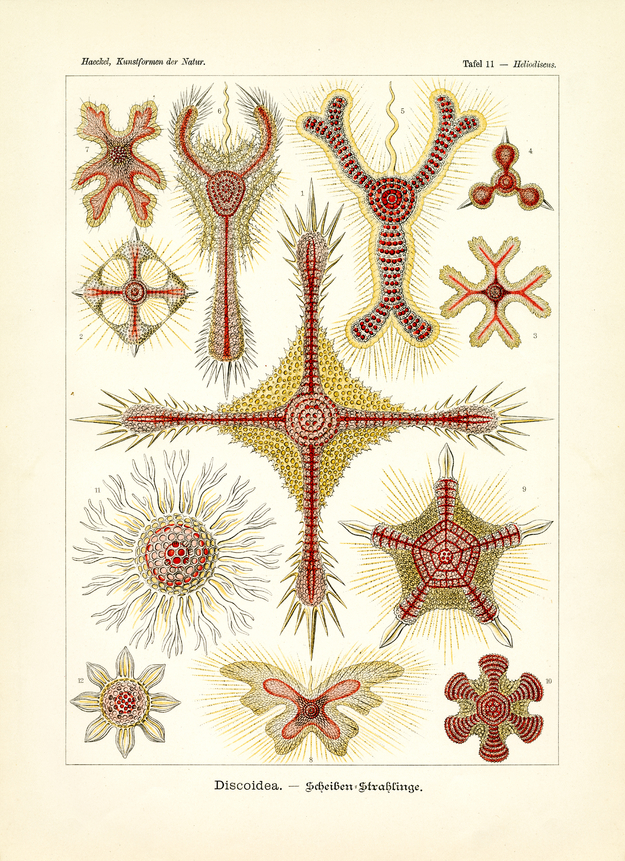All Radiolaria of this plate belong to the legion of Spumellaria, which are characterized by hundreds or thousands of delicate ‘plasma filaments’ (Pseudopodia) emanating from the mono-cellular body and protruding through innumerable fine, equally distributed pores of the central capsule (fig. 5, 6, 8 and 9). The latter is here coloured in red, the covering gelatinous cover (Calymma) in yellow. The delicate skeleton of these “foam starlets”, of which more than 2000 species are described, consists of a very tender network of siliceous threads, a most fine filigree work. In the order of Discoidea, with the forms illustrated here being part of it, the basic form of skeleton formation is always a circular, biconvex disc; radial arms, wings or prickles of most diverse number, size and shape grow from the border of this lens/disc; they serve as protective arms and hovering apparatuses thus preventing the sinking of these small creatures. Most Diacoidea are so small that they are invisible to the naked eye or just as a most subtle dot; they live in billions hovering at the surface and at various depths of the ocean.
Translation of the original German introduction by Ernst Haeckel:
Phylum of Protozoa (Urtiere); - class of Rhizopoda (Wurzelfüßer); - subclass of Radiolaria (Strahlinge); - legion of Spumellaria (Peripylea or Schaumsternchen); - order of Discoidea (Scheiben-Strahlinge).
Translation by VR Translators Bangalore
This is one of the 100 pop science biology illustrations that were published from 1899 – 1904 in Leipzig by Ernst Haeckel through Verlag des Bibliographischen Instituts.
We've scanned the original lithography at 1200dpi on the Epson A3 scanner of A3 scanner huren. You can download a 400dpi JPEG here.
